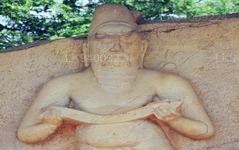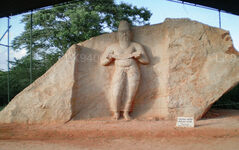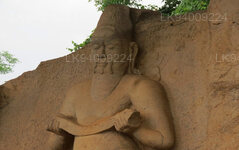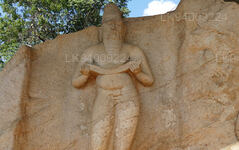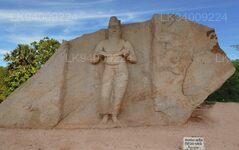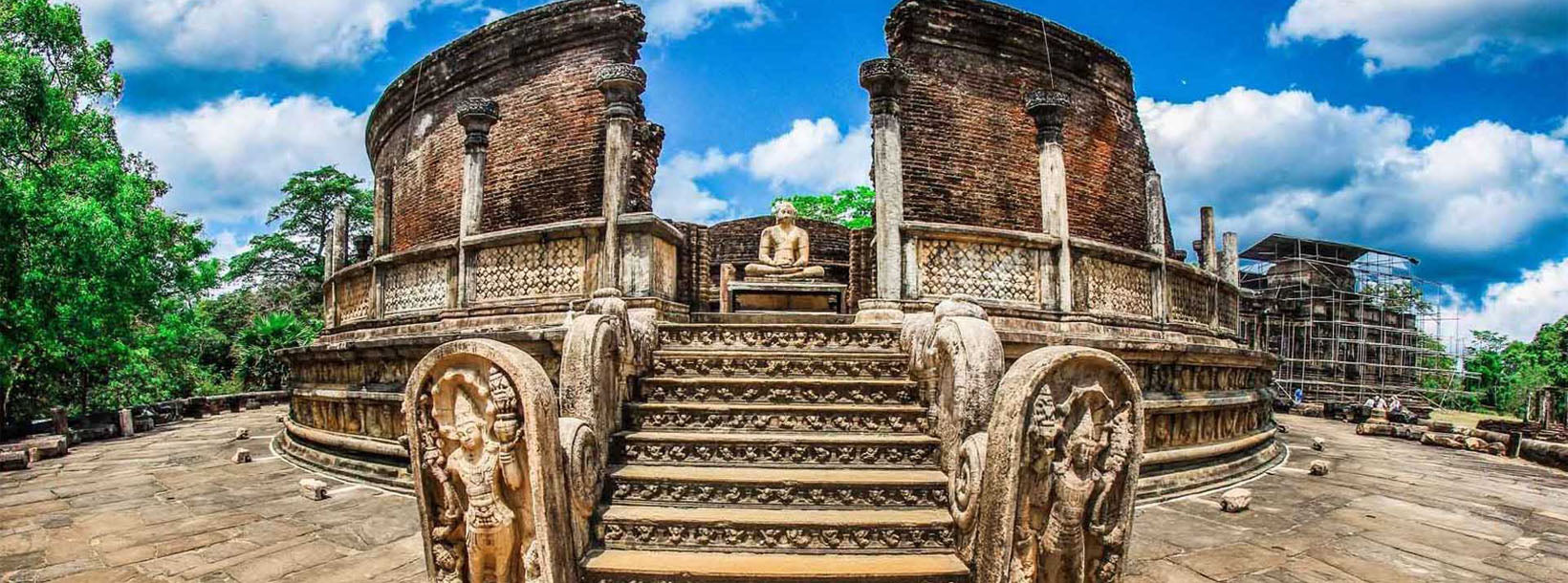
Polonnaruwa Şehri
Sri Lanka'da UNESCO Dünya Mirası Listesi'nde yer alan Polonnaruwa, ülkenin Orta Çağ başkentiydi (11.-13. yüzyıllar). İkonik Gal Vihara heykelleri de dahil olmak üzere iyi korunmuş kalıntılarıyla ünlü olan şehir, antik Sinhala medeniyetinin ihtişamını yansıtan etkileyici mimarisiyle dikkat çekiyor.
Pulasthi Statue
The statue is located to the north of the city of Polonnaruwa, and close to the eastern bank of the Parakrama Samudra reservoir, which was built by Parakramabahu I himself. It is about 100 metres (330 ft) north of the ancient Potgul Vehera monastery
LocationThe statue is located to the north of the city of Polonnaruwa, and close to the eastern bank of the Parakrama Samudra reservoir, which was built by Parakramabahu I himself. It is about 100 metres (330 ft) north of the ancient Potgul Vehera monastery.
CharacteristicsThe statue was built presumably in the 12th century, during the reign of Parakramabahu I. The statue of Parakramabahu I is one of the best stone sculptures belonging to the Polonnaruwa period. The 11-foot-2-inch-high (3.40 m) statue is carved in high relief on a large boulder, with full use being made of its height. Its upper body is bare except for a single thread worn over the left shoulder.A long object is held in the hands. The statue's face carries a grave expression, with half-closed eyes, a high forehead, a long beard and a moustache. The shoulders of the statue are rounded, suggesting "extraordinary strength". The right leg is relaxed with the right knee bent forward slightly. The left leg carries the weight of the body, while the hip is also slightly inclined to the left. According to archaeologist Senarath Paranavitana, this statue is "the very embodiment of strength, majesty and dignity"
IdentityThe statue has not been positively identified, but the popular and widely accepted belief is that the statue is of King Parakramabahu I, who ruled the country 1153 to 1186. Historian Mendis Rohanadeera has suggested that the statue shows a man belonging to the Lambakanna clan, because a hare—a symbol of this clan—is depicted above the left shoulder of the statue. This supports the theory that it is a statue of Parakramabahu I, who was of the Lambakanna clan. However, another theory is that it is the statue of a sage; either Agastya or Pulasthi. The object held in the hands of the statue may be an ola (cured palm leaves) book. This, and the fact that it is located close to the Potgul Vehera, which was a library in ancient times, supports this theory. However, another belief is that the object is a "yoke of kingship".
Polonnaruwa Bölgesi Hakkında
Polonnaruwa, Sri Lanka'nın kuzey-orta eyaletinin en büyük ikinci şehridir. Antik Polonnaruwa şehri, UNESCO tarafından Dünya Mirası Alanı ilan edilmiştir. Polonnaruwa, arkasında büyük bir fetih ve mücadele geçmişi barındırır ve haklı olarak Kültür Üçgeni'nin üçüncü unsurunu oluşturur. Kandy'nin yaklaşık 140 km kuzeydoğusunda yer alan Polonnaruwa, sayısız önemli turistik yeri ile tarih ve kültür tutkunlarına saatlerce sürecek bir keyif sunar.
Bugün ayakta kalan fiziksel kalıntıların çoğu, parklar, yapılar, sulama sistemleri vb. dahil olmak üzere şehir planlamasına büyük miktarda kraliyet kaynağı harcayan Kral Parakrama Bahu I'e aittir. Hükümdarlığı dönemi, krallığın vizyon sahibi bir hükümdar altında gelişip zenginleştiği bir altın çağ olarak kabul edilir. Parakrama Samudra, devasa bir su deposudur ve adını koruyucusunun adından alır. Kralın popüler Kraliyet Sarayı, güzelce oyulmuş taş fillerle çevrili Kabul Salonu ve Yüzme Havuzu, dönemin üstün mühendislik yeteneklerini yansıtır.
Kuzey Merkez Eyaleti Hakkında
Ülkenin en büyük ili olan Kuzey Merkez Eyaleti, ülkenin toplam yüzölçümünün %16'sını kaplamaktadır. Kuzey Merkez Eyaleti, Polonnaruwa ve Anuradhapure adlı iki ilçeden oluşmaktadır. Anuradhapura, Sri Lanka'nın en büyük ilçesidir ve yüzölçümü 7.128 km²'dir.
North Central Province has numerous potentials for Investors to start their Businesses, especially Agriculture, agro based industries and Livestock sectors. More than 65% of North Central Province's people depend on basic Agriculture and agro base industries. NCP also called "Wew Bendi Rajje" because there are more than 3,000 medium and large scale tanks situated in the province. Sri maha bodiya, Ruwanweli seya, Thuparama dageba, Abayagiri Monastry, Polonnaruwa Rankot wehera, Lankathilake are scared


